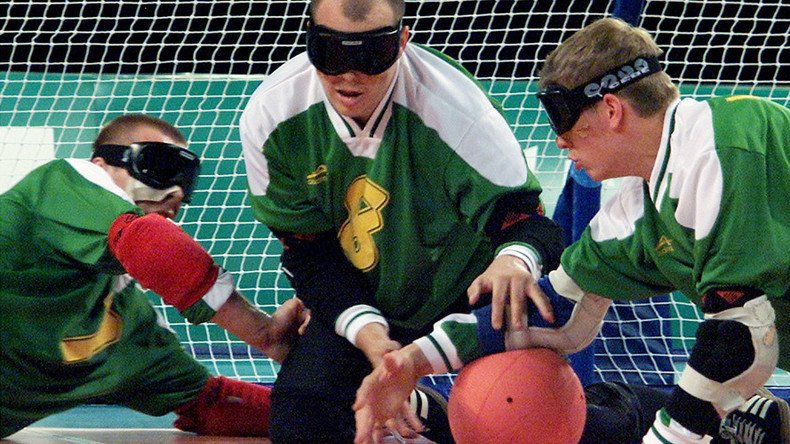Unusual sports at Rio 2016 Paralympic Games

This summer’s Paralympics will see 4,500 of the world’s best disabled athletes from 176 countries battle for gold across 23 sporting disciplines. In case some of the sports look unfamiliar, here RT gives you the lowdown on a few of the more niche events.
The Paralympics includes sports that are developed to make them more interesting based on the athletes’ disabilities. So if you don’t know your goalballs from your jacks, never fear – here’s our guide to three sports exclusive to the Games.
Boccia
Pronounced ‘Botch-cha’, this game of strategy has its roots in Ancient Greece, when competitors would throw stones at a target rock.
Honed in mid-16th century Italy, Boccia is now mainly contested by competitors with cerebral palsy and other neurological conditions, and made its Paralympic debut in the New York/Stoke Mandeville 1984 Games.
Boccia events at Rio will be divided into four categories that define the level of disability: BC1, where competitors with cerebral palsy are assisted by an aide; BC2, where competitors are unassisted; BC3, for competitors affected by cerebral palsy or another disability; BC4, for competitors affected by another disability, such as muscular dystrophy.
Competitors can use the aid of a ramp, or an assistant who must not face or look at the field of play.
Players take turns throwing either six red or blue balls as close as possible to a white ball, known as the jack. The winner is the team or player who lands the most balls closest to the jack.
Concentration and cunning is paramount, as just one toss can alter the entire course of the game and ignite wild celebrations.
Matches of four rounds are contested in individual and pair events and six rounds per match in team events. There will be four individual, two pairs and one team event in this summer’s Paralympics in Rio.
Goalball
Originally created in 1946 to help rehabilitate war veterans, goalball is today played by visually impaired athletes in 85 countries and featured for the first time at the Toronto 1976 Paralympics.
Games of goalball are divided into two 12-minute halves and teams consist of three players on the pitch and three on the bench, each wearing a blackout mask to ensure equality.
The players act as both attackers and defenders and try to score goals by throwing the ball either low or making a bouncing throw. The 1.25kg goalball ball has bells inside it to make a noise that the players follow.
Finland are the current men’s Paralympic champions, having won gold in London 2012, and Japan will defend the gold in the women’s event. Brazil are the men’s world champions, having won the 2014 Goalball World Championships and USA are the women’s world champs.
The game is overseen by 11 referees – two to conduct the match, four that replace balls and guide substitutes, and five scorers. The sport will be played in Rio by 10 men’s and 10 women’s teams.
The width of the two goals at either end are the width of the pitch, so players position themselves accordingly in the positions they need to defend in right wing, left wing and in the central or pivot position.
Five-a-side football
This version of the beautiful game was developed in Brazil in the 1960s by visually impaired students who would kick a bottle with pebbles in it in a game called ‘goal to goal’.
Over time the bottle became a ball with rattles in it which the players listen out for in order to play. The players, who are considered blind, must wear eye-shades which opponents cannot touch, with the only sighted players on each team being the goalkeepers.
What the players lack in sight, they make up for in silky skill.
Verbal instructions are allowed, but only by guides, goalkeepers and coaches. The guides are positioned behind the opponent’s goal, shouting the moves and the direction to the goal.
There are no sidelines, but low side walls measuring 1.2 meters in height instead. The game is divided into two 25-minute halves and after committing five fouls, an athlete will be sent off and substituted.
Spectators must observe rules too, including keeping quiet while the game is underway, so athletes can hear the instructions and, above all, the rattling of the ball.
Home favorites Brazil will be the team to beat in Rio. They have won every five-a-side football gold medal since its introduction at Athens 2004.












